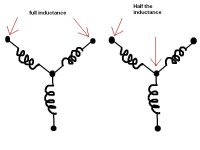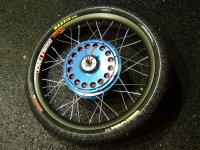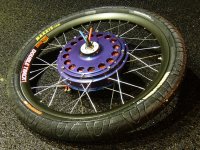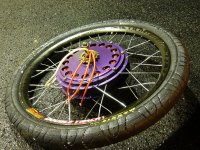OK, I came in late here, so going back to the axle a bit. I do hope you are correct and I am wrong, but I still have big concerns about the axle..especially after all the amazing work you have done on the rest of the motor. Would be such a shame to now see it fail because of the axle breaking
John in CR said:
Doc,
I find it difficult to believe that you're going to all this trouble, and even pressed out the axle, yet you're further weakening an already proven to be inadequate axle, and putting it back in the motor instead of replacing it with a larger stronger axle with more room for the things you want to run through it. The only other change would be going to bearings with a larger ID.
Doc, I agree with John, to a degree. I do not think that what you are doing will weaken the axle any further, What you are doing could be said to be rather like having a power line with two fuses in series with it...what you are doing is changing a 13 amp fuse for a 10 amp fuse, but the second fuse in series is only a 5 amp anyway, so yes the slot is weakening it, but the shoulder where the threaded portion starts is far weaker anyway, so making a new slot is not going to cause any problems.
Doctorbass said:
The axel are innadequate for poople who dont understand how torque work on metal part... if you use a little bit of mechanical engineering it's easy to know how to use it without having problem.
I am trained as engineer..to basic level...( one year diploma) and do understand these things...I had a problem with my axle fully clamped in torque plates.
Doctorbass said:
Remember i have 5 X5 motor and am also one of the person who have put the most kW into them and torture test them more than enough... and... i NEVER had any failure... ( i have all existing generation of X5 too)
I never twisted any axel and i doubt i could have problem doing it. The torque arm i make are also a good match to avoid any metal torsion or shear.
As you see mine twisted clean off...5700 miles or so...Not as much power as you .. I see continuous of about 5kW...for a minute or so...and peaks of best so far 14.2kW. Also heavy regen breaking. It is not the interface between torque plate and axle that is the problem, it is the stress point at the shoulder where the axle drops down to 14mm, that is where mine twisted. My drop outs were tight also, so I effectively had a torque plate of the thickness of my plates, plus the dropout thickness, so ...15-18mm thick right up to the shoulder. Maybe you got lucky with the steel your axles are made of..maybe I just got the Friday axle...
Doctorbass said:
I will put back the axel with the DP420 epoxy wich will be very strong so the stator wont turn on the axel.
I am putting heavier splines on mine...but I I may use this epoxy too. or I may just drill and pin at the spline junction with hardened roll pin
Doctorbass said:
The idea of making a new axel would cost me $$$ and i dont have any source for having a custom made axel for cheap. So i have to keep the original axel
I have a mate with a big lathe and milling machine

Did you see the picture of my breakage? The axle did not break at my torque plates, there was no movement of axle within the torque plates, mine snapped at the the 14mm shoulder where the threaded portion ends, about 12mm in from the the torque plate.
It was a clean break, no old rust in fracture, it happened instantly ..back wheel came off as I pulled away.
The thread is here
here
and here are my pictures of the break, annotated by Big Moose
OK, so if you get lucky and do not have big crystalline structures in your axle then you may be OK, but I reckon you should do something about the threaded end.
Like this, then you can make full on clamping torque plates
View attachment 4

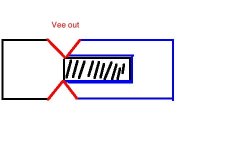 View attachment 1
View attachment 1
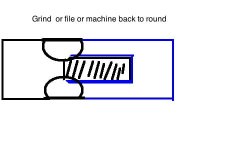
If you could then heat treat to reduces stresses etc then even better


